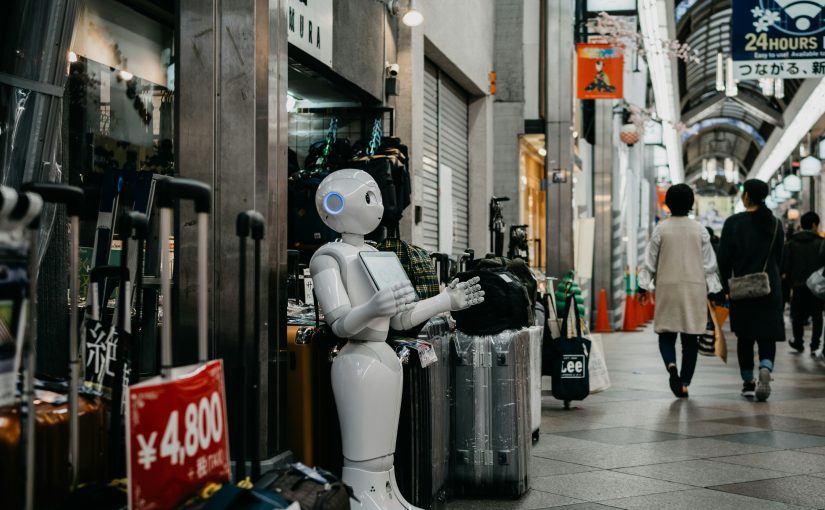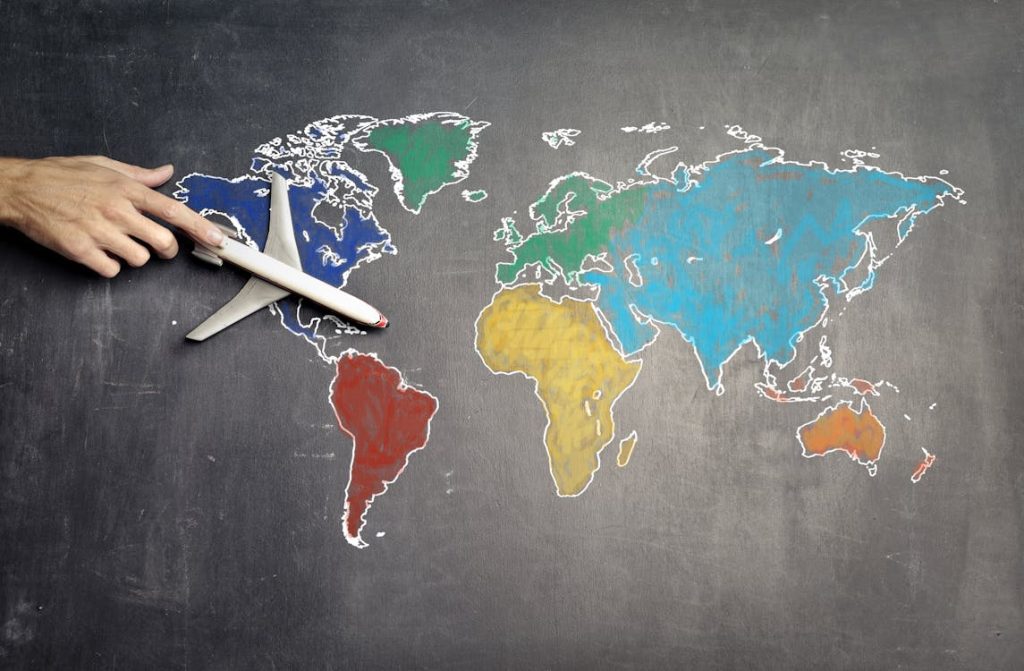
We have seen a technological revolution in the last few years. The emergence of artificial intelligence is an undeniable force that has to be reckoned with if we are to survive. Just like the introduction of the wheel and the computer, artificial intelligence is taking over the world. It is evident that it will also affect the future of the translation industry.
Many localization technologies are also being employed to take care of cultural sensitivity. Advancements in machine translation are making it clear that we are witnessing the beginning of a translation technology revolution. While there are many benefits of using machine translation software to cut short the processing time, one may argue whether the result is as good as using the services of a human translator. The truth is that though translation software is simplifying work, it cannot replace the human element in communication. This article will look at how technology is transforming the translation industry, the challenges posed by translation software, and whether human translators will still be needed to convert documents and speeches into different languages.
Trends in Translation Technology
There has been a rapid increase in the need for translation services in recent years. This is because the advancements in technology have made it easier for businesses to expand into global markets. You will find people communicating with each other from different parts of the world. More than 7000 languages are spoken globally. While the work of translation was difficult in the past, today machine translation technology is making the process of translation more quick and efficient. Many different translation packages are available to easily change one language into another. These tools are still far from perfect but can do the work incredibly fast. However, there are some language intricacies that only human translators can handle with ease. This makes sure that cultural sensitivity has been addressed and the translation is accurate.
Artificial Intelligence and Machine Learning
In recent years, there have been strides in machine learning and the use of artificial intelligence for translation purposes. This technology makes use of AI in translation algorithms and deep learning. It is based on a training model that has used a vast library of data. This helps it detect language patterns and understand the similarities and differences of syntax in different languages. Machine language models can help in the rapid translation of documents. These tools learn from feedback and improve their own processes every time. They are of immense help where the need for accurate translation is of the utmost importance.
Neural Machine Translation
Here, the emphasis is on neural networks. They help translate content from one language to another. Rather than relying on algorithms, they use deep learning methods to understand the meaning of the text. This invariably creates superior-quality translations that are culturally accurate and have the right meaning. It’s like a translation made by a native speaker. It may have some bias since it is based on a vast amount of data. However, users of neural machine translation have praised its speed and accuracy. The results are really consistent.
Cloud Based Translation
Cloud Translation is a service offered by Google Cloud that allows you to translate text within your websites and applications. It acts like a real-time translator built into your software, using machine-learning models to convert text from one language to another.
Here’s a breakdown of how Cloud Translation works:
- Machine Translation: Cloud Translation utilizes machine learning, a type of computer program trained on vast amounts of translated text. This allows it to analyze and convert text between over 100 languages with high accuracy.
- Automatic Language Detection: No need to identify the source language beforehand! Cloud Translation can automatically detect the language of your text, streamlining the translation process.
- Scalability and Limits: Cloud Translation can handle massive amounts of text translation, making it ideal for large websites or applications. However, there are limitations on the size of each individual translation request and the overall rate of requests. You can also set quota limits to manage your translation costs.

Computer-Assisted Translation Tools
These tools are software programs that help translators increase their efficiency and productivity. They provide facilities like translation memories, glossaries, and termbases. Translation memories are databases of previously translated sentences. They can be used in future translations to save time and ensure consistency. Tools like termbases and glossaries help translators use consistent terminology across different translations and may help with localization technologies.
Computer-assisted tools for checking spelling, grammar, and style help translators improve translation quality and avoid errors. This results in faster translation with higher accuracy.
How AI is Making a Difference in Translation Services
You must be aware that artificial intelligence has affected different business sectors, including the translation services industry. Rapid advancements in this technology have affected the field of language translation, and there have also been advances in machine translation. Using AI translation tools improves the speed and efficiency of the translation process. It can instantly convert one language into another. It can also learn from earlier errors, help people make better translations, and give new suggestions for sentences. It is a godsend for people who speak different languages, as it helps them communicate and understand each other. It can really make a difference when people want to talk to each other in the absence of a human translator.
AI has several distinct advantages that make it a star in translating languages. It can recognize speech patterns, make the correct decisions to aid in the conversion process, and do translations with comparative ease.

AI Translation Software Benefits
AI translation software is beneficial for individuals and businesses alike. Some of the benefits are outlined below:
- Efficiency is Improved
Since AI translation software can translate content much faster than a human translator, large volumes of data can be processed quickly. Compared to human beings, no rest is required.
- Consistency is Maintained
AI tools enable consistent translations. The length of the text or any complicated language does not matter. The algorithms are set, ensuring consistency across several languages and pages of text.
- Costs are Saved
AI software translations can cost much less than human translations. This is because they need less time and resources to complete. So, firms that need to translate large amounts of content regularly benefit from such software.
- Accurate and Precise
The AI translation software provides accurate and precise translations, even for content that uses technical terms or specialized vocabulary with high diction. This is so because the software has access to glossaries, translation memories, and dictionaries, among other matters. This makes the language easier to analyze and translate, and hence, accuracy is maintained to a great extent.
- Reduction In Workload
As AI translators are used to do the task of translation, work is done swiftly by the software, whereby the workforce can be utilized for other critical aspects of a business. Therefore, extra labor and time are not used for the task of translation and just one person can be used to edit the text. Thus making it cost-effective for businesses where the labor force is minimized in this department.
Drawbacks of AI and Machine Translation Software
It sure looks like the tools of artificial intelligence and machine language translation are more efficient compared to human translators. However, don’t get discouraged just yet. There are still some weaknesses when it comes to the use of AI in language translation.
- Balancing Cost and Quality
You just have to hand it over to machine language translation when it comes to translation efficiency. However, you might not be impressed by the quality of the results. You will find that the average hourly starting rate for a good human translator is twice the cost of using a machine translator to do the same job. Though machine translation services are quick, there will still be a need for human intervention to use language and idioms correctly.
- Results Could Be Skewed
Since the AI model has been developed using tons of data and information to populate results, there is a probability that it may produce skewed results. The final results may have a negative or positive bent. It can get all the more problematic when you are translating sensitive material because it can have undesirable effects. Political speeches or legal contracts are a case in point.
- Difficulties in Comprehension
The translation provided by machine language tools can create more problems than they solve. This is because the learning models are far from perfect. It has sometimes been noticed that when AI tools are used to convert legal or technical documents, it can result in translations that are difficult to read or understand.

The Big Question: Can AI Replace Human Translators?
It may be tempting to state that the use of AI has replaced the need for human translators. However, a deeper analysis shows that this is not the case. Even the most sophisticated artificial language translation software will not match the skills of an experienced human translator. Though AI has tools that make the translation process more efficient, it still has a long way to go before it can overcome issues with tone of voice, context, and colloquialisms. It can translate text quickly but still has problems meeting the nuances of language.
It must be admitted that when it comes to lengthy documents, using AI is the quickest way to do the job. However, human assistance is still needed to get the best results.
Even when it comes to writing persuasive copy or marketing content, AI tools can fail miserably. This process is called transcreation, where human writers are needed to ensure that the correct tone and intent are present in the final results. That is why the services of human translators are very much needed for the future of translation services.
You can easily get document translation services with a professional touch when you place an order with us. Contact us today to get a quote as well as the details of the services we provide. We provide services of high quality and have many satisfied clients, which you can see from a review of our website.
Conclusion
The future of the translation services industry is still very much in the hands of human translators. No machine or tool can effectively replace the services of an experienced language expert. While there are all sorts of tools available to simplify and expedite the process of translation, humans are indispensable when it comes to understanding context, and cultural differences and handling complex content. Use TranslateSwift today for all your translation needs, to get the best comprehensive services at an affordable price.
FAQs – The Future of Translation and Technology
- What is the future of the translation services industry?
The translation services industry is all set to grow further. While the use of artificial intelligence and machine language translators can speed up the process, the truth is that you still need the services of a human translator to handle context, complex or technical content, and the nuances of language.
- What are some common challenges of translation?
Some of the common challenges of translation include getting an accurate and quality translation, doing it in a limited time, and finding translators with good technical knowledge of a subject.
- What is the role of AI in translation?
The use of AI and machine language tools has simplified the translation process. It makes the process quicker. Google Translate and Microsoft Translator are good programs. There are a variety of apps that make voice translation simpler, too.










